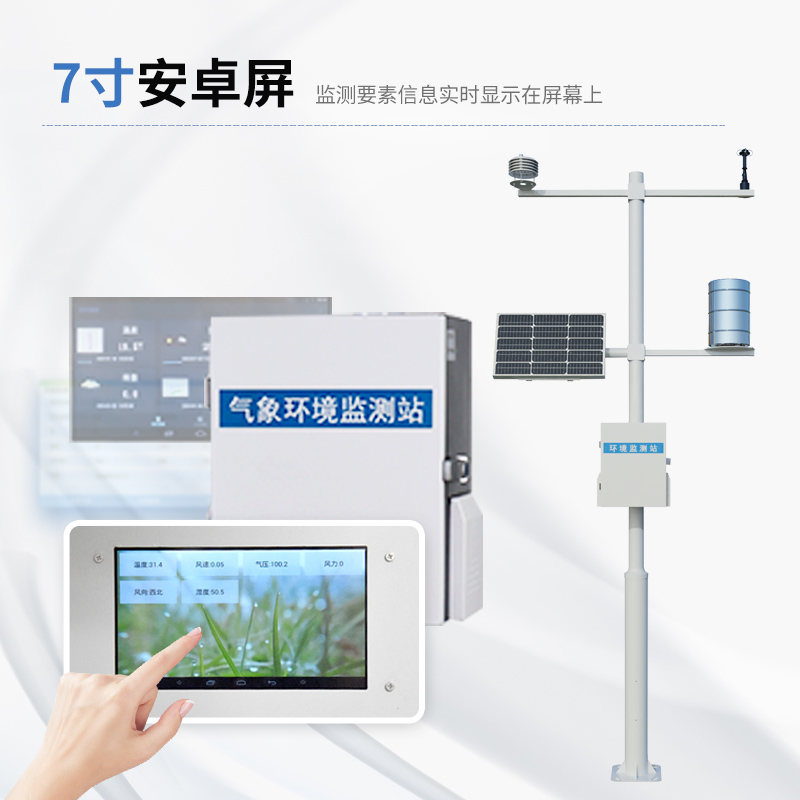Shandong Fengtu IOT Technology Co., Ltd
Sales Manager:Ms. Emily Wang
Cel,Whatsapp,Wechat:+86 15898932201
Email:info@fengtutec.com
Add:No. 155 Optoelectronic Industry Accelerator, Gaoxin District, Weifang, Shandong, China

Sales Manager:Ms. Emily Wang
Cel,Whatsapp,Wechat:+86 15898932201
Email:info@fengtutec.com
Add:No. 155 Optoelectronic Industry Accelerator, Gaoxin District, Weifang, Shandong, China
time:2025-05-07 08:46:41 source:Weather Station viewed:359 time
Meteorological monitoring is closely intertwined with our daily lives. From daily commuting to agricultural production, from industrial operations to urban planning, meteorological information plays a pivotal role. Precise meteorological monitoring enables early warnings of severe weather events such as rainstorms, typhoons, and cold waves, thereby safeguarding people's lives and property. Additionally, it serves as a fundamental basis for various industries to plan their production activities rationally, enhancing productivity.
In the realm of modern meteorological monitoring, automatic weather stations have gained widespread adoption. These stations are capable of automatically collecting and transmitting meteorological data. With minimal human intervention, they can generate reports and send data to central stations, significantly bridging the gaps in meteorological data across different spatial regions.
An automatic weather station typically consists of meteorological sensors, a microcomputer-based data logger, a power supply system, a radiation shield with ventilation, an all-weather protective enclosure, a meteorological observation stand, and a communication module. It monitors a comprehensive range of parameters, including wind speed, wind direction, rainfall, air temperature, air humidity, light intensity, soil temperature, soil moisture, evaporation rate, and atmospheric pressure, providing detailed and accurate data for a thorough understanding of weather conditions. Depending on the application scenarios and specific requirements, automatic weather stations come in various types. For instance, handheld weather stations are portable and can display measurement results on the spot; vehicle-mounted weather stations are designed for emergency environmental monitoring in vehicles and ships; wireless telemetry weather stations leverage advanced IoT technology, transmitting data to a network platform via GPRS for easy access by users from anywhere; wired telemetry weather stations represent the traditional method of data transmission through wired communication circuits; and portable weather stations are ideal for field climate monitoring, directly sending data to a data logger for storage.
Among these, the Small automatic weather station is a common and practical type. It is typically capable of real-time monitoring of five key meteorological parameters: wind speed, wind direction, temperature, humidity, and atmospheric pressure. Take the Fengtu Small automatic weather station as an example. It features a highly integrated design, with a five-in-one sensor that can output all five parameters simultaneously, enabling 24/7 continuous online monitoring of outdoor meteorological data. The ultrasonic probe is hidden under the top cover, effectively preventing interference from snow and rain accumulation as well as natural wind blockage. Its advanced measurement principle involves transmitting continuous variable-frequency ultrasonic signals and measuring the relative phase to determine wind speed and direction. The sensor housing is made of imported ASA material and has a protection rating of IP65 or higher, ensuring stable operation in harsh environmental conditions. This type of weather station finds extensive applications in diverse fields, including meteorology, agriculture, forestry, environmental protection, marine affairs, airports, ports, scientific research expeditions, and educational institutions, providing essential data for decision-making and research, and contributing to the sustainable development of these sectors.

The measurement of weather visibility plays a crucial role in many fields such as transportation and meteorological research. Currently, there are mainly two ways to measure visibility, namely manual measurement and equipment measurement. Since manual measurement has relatively large errors and is e...
In agricultural production, diseases pose a serious threat to the growth of crops, which is related to both yield and quality. Spores play a crucial role in agricultural disease monitoring, and the Spore Catcher is a powerful tool for monitoring spores.Spores: The "Early Warning Signal" of...
Meteorological visibility refers to the maximum horizontal distance at which a person with normal vision can see and identify a target object against the sky background under current weather conditions (usually measured in meters or kilometers).Transportation is the industry that needs visibility da...
In today's era of pursuing health and ecology, more and more scenic spots have introduced Negative Oxygen Ion Monitoring Stations, equipped with smart large screens. This initiative not only adds technological elements to the scenic spots but also is closely related to tourists' health and e...